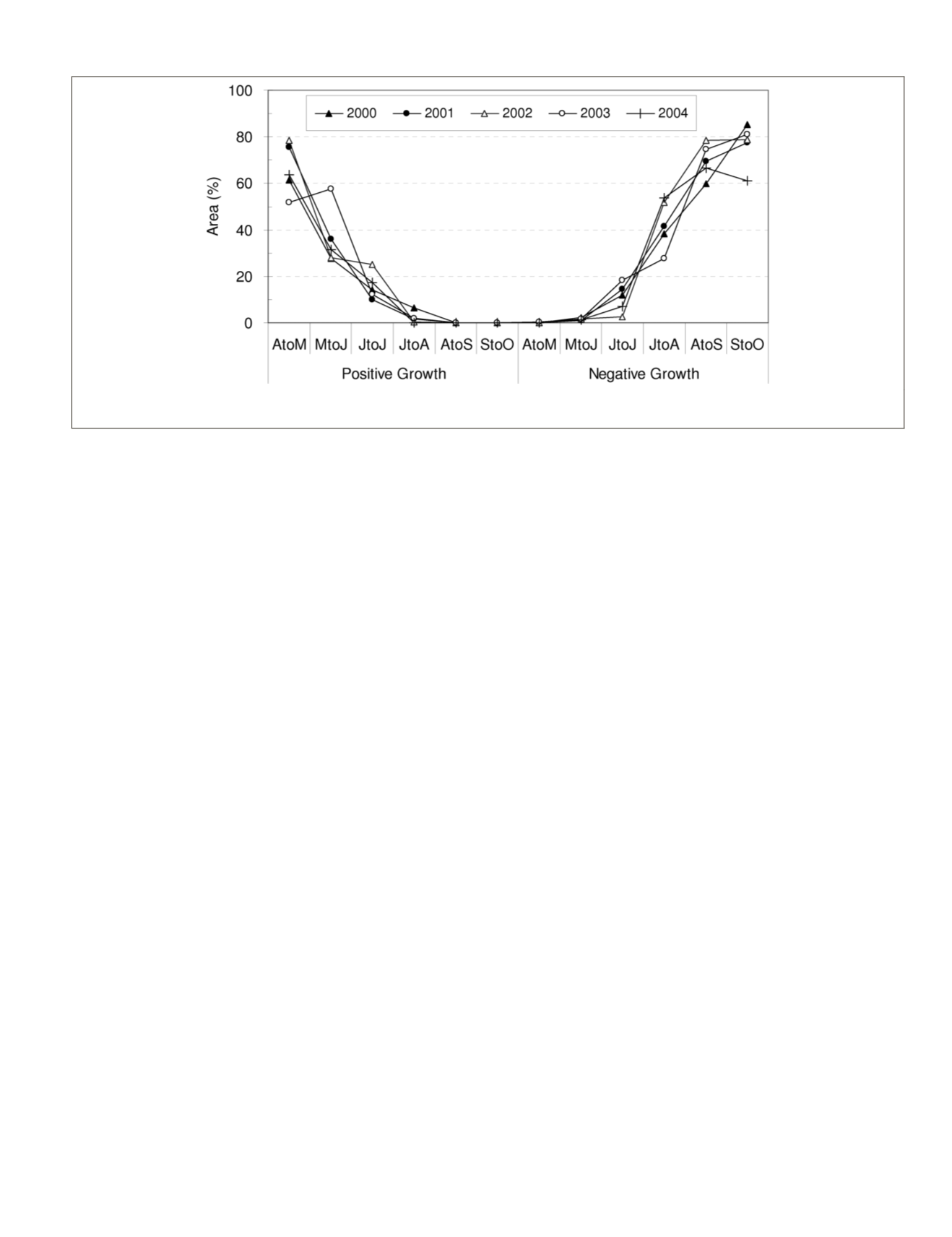
steppe, and desert in Mongolia varied in a power function as
temperature increased while changed in a logarithm func-
tion as precipitation increased. The effect of temperature and
precipitation on the mean of monthly
NPP
s of forest and grass-
land was much stronger than desert steppe and desert.
References
Bat-Oyun, Ts., M. Shinoda, and M. Tsubo, 2010. Estimations of
pasture productivity in Mongolian grasslands: Field survey
and model simulation,
Journal of Agricultural Meteorology
,
66(1):31–39.
Bhatti, J.S., G.C. van Kooten, M.J. Apps, L.D. Laird, I.D. Campbell, C.
Campbell, M.R.
Turetsky, Z. Yu, and E. Banfield, 2003. Carbon balance and climate
change in boreal forests, Chapter 20,
Towards Sustainable
Management of the Boreal Forest
(P.J. Burton, C. Messier, D.W.
Smith, and W.L. Adamowicz, editors), NRC Research Press,
Ottawa, Ontario, Canada. pp. 799–855.
Bian, J.H., A. Li, and W. Doeng, 2010. Estimation and analysis of NPP
of Ruoergai wetland in China for the recent 10 years based on
remote sensing,
Procedia Environmental Sciences,
2:288–301.
Chen, Q., P. Gong, D. Baldocchi, and Y.Q. Tian, 2007. Estimating
basal area and stem volume for individual trees from lidar data,
Photogrammetric Engineering & Remote Sensing
, 73(12):1355–1365.
Chen, Y., G. Lee, P. Lee, and T. Oikawa, 2007. Model analysis of
grazing effect on above- ground biomass and above-ground
net primary production of a Mongolian grassland ecosystem,
Journal of Hydrology
, 333:155–164.
Chertov, O., J.S. Bhatti, A. Komarov, A. Mikhailov, and S. Bykhovets,
2009. In uence of climate change, re and harvest on the carbon
dynamics of black spruce in Central Canada,
Forest Ecology and
Management
, 257:941–950.
Chuluun T., and D. Ojima, 2002. Land use change and carbon cycle
in arid and semi-arid lands of East and Central Asia,
Science in
China
,
45:48–54.
Clark, D.A., S. Brown, D.W. Kicklighter, J.Q. Chambers, J.R.
Thomlinson, and J. Ni, 2001. Measuring net primary production
in forests: Concepts and field methods,
Ecological Applications
,
11:356–370.
Cramer, W., D. Kicklighter, A. Bondeau, B. Moore, C. Churkina, B.
Nemry, A. Ruimy, and A.L.
Schloss, 1999. Comparing global models of terrestrial net primary
productivity (NPP): Overview and key results,
Global Change
Biology
, 5:1–15.
Dagvadorj, D., L. Natsagdorj, J. Dorjpurev, B.Namkhainyam, P.
Gomboluudev, P. Batimaa, D. Jugder, R. Mijiddorj, G. Davaa, B.
Erdenetsetseg, and Khaulenbek, 2009. Mongolia Assessment
Report on Climate Change 2009. Ministry of Environment,
Nature and Tourism, Mongolia, 228 p.
Davaa
,
G., D. Oyunbaatar, and M. Sugita
, 2006.
Surface water
of Mongolia,
A Handbook of
Mongolian
Environments
(Y.
Konagaya, editor), pp. 55–82.
Dugarsuren N., C. Lin, and K. Tsogt, 2011. Land cover change
detection in Mongolia in last decade using MODIS imagery,
Proceeding of ACRS2011
, Taipei, Taiwan, pp 688.
Dugarsuren, N., and C. Lin, 2011. Investigation of vegetation
dynamics of Mongolia using time series of NDVI in response to
temperature and precipitation,
Mongolian Journal of Biological
Science
,
9:9–17.
Fang, J.Y., S.L. Piao, C.B. Field, Y. Pan, Q. Guo, L. Zhou, C. Peng,
and S. Tao, 2003. Increasing net primary production in China
from 1982 to 1999,
Frontiers in Ecology and the Environment
,
1:293–297.
Fensholt, R., I. Sandholt, and M.S. Rasmussen, 2004. Evaluation of
MODIS LAI, fAPAR and the relation between fAPAR and NDVI
in a semi-arid environment using in situ measurements,
Remote
Sensing of Environment
, 91:490–507.
Field, C.B., J.T. Randerson, and C.M. Malmstrom, 1995. Global net
primary production: Combining ecology and remote sensing,
Remote Sensing of Environment
, 51:74–88.
Gao, Q., and M. Yu, 1998. A model of regional dynamics and its
application to the study of Northeast China Transect (NECT)
responses to global change,
Global Biogeochemical Cycles,
12:329–344.
Girardin, C.A.J., Y. Malhi, L.E.O.C. Aragao, M. Mamani, W. Huaraca-
Huasco, L. Durand, K.J.
Feeley, J. Rapp, J.E. Silva-Espejo, M. Silman, N. Salinas, and R.J.
Whittaker, 2010. Net primary productivity allocation and
cycling of carbon along a tropical forest elevational transect in
the Peruvian Andes,
Global Change Biology
,
16(12):3176–3192.
Gleason, C.J., and J. Im, 2012. A fusion approach for tree crown
delineation from lidar data,
Photogrammetric Engineering &
Remote Sensing
,
78(7):679–692.
Goetz, S.J., and S.D. Prince, 1999. Modeling terrestrial carbon
exchange and storage: Evidence and implications of functional
convergence in light use efficiency,
Advances in Ecological
Research
, 28:58–92.
Gonzalez, P., G.P. Asner, J.J. Battles, M.A. Lefsky, K.M. Waring, M.
Palace, 2010. Forest carbon densities and uncertainties from
Lidar, QuickBird, and field inventories in California,
Remote
Sensing of Environment
, 114:1561–1575.
Figure 8. Seasonal trend of the percentage area of positive and negative growth during time spans of the growing season from April to
October.
PHOTOGRAMMETRIC ENGINEERING & REMOTE SENSING
July 2015
597


